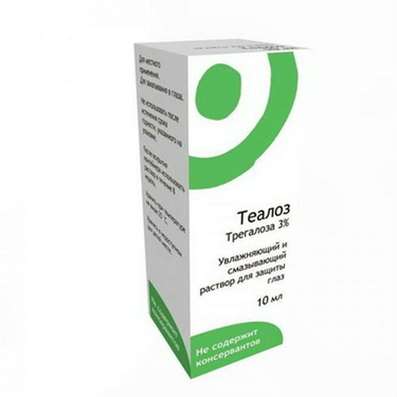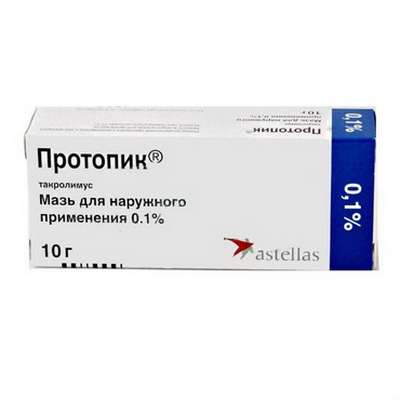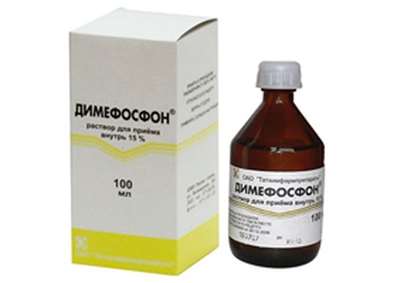Instruction for use: Transamcha
I want this, give me price
Dosage form: Solution for injection; tablets
Active substance: Acidum tranexamicum
ATX
B02AA02 Tranexamic acid
Pharmacological group:
Fibrinolysis inhibitors
The nosological classification (ICD-10)
C95 Leukemia of unspecified cell type: Acute non-lymphocytic leukemia; Leukemia undifferentiated; Undifferentiated leukemia; Non-lymphocytic leukemia; Acute leukemia in adults; Non-lymphocytic leukemia
D61 Other aplastic anemia: Fanconi anemia; Anemia aplastic
D69.3 Idiopathic Thrombocytopenic Purpura: Werlhof's Disease; Idiopathic autoimmune thrombocytopenia; Idiopathic thrombocytopenic purpura of adults; Idiopathic thrombocytopenic purpura in adults; Immune idiopathic thrombocytopenic purpura; Immune thrombocytopenia; Bleeding in patients with thrombocytopenic purpura; Evans Syndrome; Thrombocytopenic purpura; Thrombocytopenia of immune origin; Chronic idiopathic thrombocytopenic purpura; Essential thrombocytopenia; Autoimmune thrombocytopenic purpura in pregnancy; Posttransfusion purpura
J02.9 Acute pharyngitis, unspecified: Purulent pharyngitis; Acute rhinopharyngitis; Lymphonodular pharyngitis
J03.9 Acute tonsillitis, unspecified (angina agranulocytic): Throat infections; Acute tonsillitis; Angina; Follicular tonsillitis; Angina alimentary-hemorrhagic; Secondary sore throat; Sore throat primary; Angina follicular; Inflammatory diseases of the tonsils; Catarrhal angina; Lacunar angina; Acute Sore Throat; Tonsillitis; Tonsillitis acute; Tonsillar angina; Follicular sore throat; Bacterial tonsillitis
J04 Acute laryngitis and tracheitis: Cough in diseases of the upper respiratory tract; Laryngitis; Laryngitis acute; Tracheitis acute; Pharyngolaryngitis; Infectious-inflammatory disease of ENT organs
K12 Stomatitis and Related Losses: Bacterial stomatitis; Inflammatory diseases of the oral cavity; Inflammatory diseases of tissues of the oral cavity; Inflammatory processes in the oral cavity; Fungal diseases of the mouth; Fungal infections of the oral cavity; Fungal infections and inflammatory diseases of the mouth; Diseases of the mouth; Infectious-inflammatory disease of the oral cavity; Exacerbation of inflammatory diseases of the pharynx and oral cavity; Stomatitis; Angular stomatitis; Chronic recurrent stomatitis; Ulcerative necrotic diseases of the oral mucosa; Ulcerative necrotic diseases of the oral mucosa; Ulcerative necrotic lesions of the oral mucosa; Ulcerative necrotic gingivostomatitis; Ulcerative stomatitis; Erosive-ulcerative lesion of the oral mucosa; Erosive-ulcerative lesions of the mucous membrane of the oral cavity; Erotic mucous membrane of the oral cavity; Recurrent ulcerative stomatitis
L30.9 Unspecified Dermatitis: Allergic dermatoses complicated by a secondary bacterial infection; Anal eczema; Bacterial maturation; Varicose Eczema; Venous dermatitis; Inflammation of the skin; Inflammation of the skin upon contact with plants; Inflammatory Skin Disease; Inflammatory Skin Diseases; Inflammatory Skin Diseases; Inflammatory skin reactions; Inflammatory processes of the skin; Hypostatic dermatitis; Fungal Eczema; Fungal dermatosis; Dermatitis; Dermatitis is stagnant; Dermatitis and eczema in the anal area; Dermatitis acute contact; Perianal dermatitis; Dermatosis; Dermatosis of the scalp; Dermatosis of psoriasis; Dermatosis with persistent itching; Dermatoses; Dermatoses itchy; Other itching dermatoses; Significant eczematous manifestations; Itching with dermatoses; Itching eczema; Itching dermatoses; Itching dermatitis; Itching dermatosis; True eczema; Skin reaction to insect bites; Skin itching with dermatosis; Constitutional eczema; Weeping eczema; Drowsing inflammatory skin disease; Dying Infectious-Inflammatory Skin Disease; Non-allergic dermatitis; Nummular eczema; Acute contact eczema; Acute inflammatory skin disease; Acute dermatosis; Acute severe dermatosis; Perianal dermatitis; Superficial dermatosis; Subacute Contact Eczema; Simple dermatitis; Occupational dermatitis; Psychogenic dermatosis; Bubble dermatitis of newborns; Pustular eruptions; Irritation and redness of the skin; Low-flammable eczema; Dry atrophic eczema; Dry eczema; Toxic dermatitis; Ear eczema like dermatitis; Chronic eczema; Chronic dermatosis; Chronic dermatosis; Chronic common dermatosis; Scaly papular dermatosis; Eczema; Eczema anal region; Eczema of the hands; Eczema Contact; Eczema lichenized; Eczema Nummular; Eczema acute; Eczema acute contact; Eczema subacute; Eczematous dermatitis; Eczema-like rashes; Ecome exogenous; Endogenous eczema; Gluteal dermatitis; Limited itching dermatitis
L50 Urticaria: Idiopathic chronic urticarial; Injury Urticaria; Chronic urticarial; Hives of the newborn
N92 Abundant, frequent and irregular menstruation: Metromenorragia; Menorrhagia; Menorrhagia primary; Idiopathic menorrhagia; Menorrhagia; Functional metronormorragia; Primary menorrhagia
N93 Other abnormal bleeding from the uterus and vagina: Atonic uterine bleeding; Prolonged menstruation; Blood loss during menstruation; Bleeding from the genitourinary system; Bleeding uterine dysfunctional; Bleeding from the genital tract of organic etiology; Uterine bleeding; Menorrhagia with fibroids; Functional uterine bleeding; Abnormal bleeding from the genitals in women
R04.0 Epistaxis: Nasal bleeding; Nasal bleeding; Epistaxis
R04.8.0 * Bleeding pulmonary: Pulmonary bleeding
R58 Bleeding, not elsewhere classified: Abdominal apoplexy; Hemorrhagia; Haemorrhage of the esophagus; Hemorrhage; Generalized bleeding; Diffuse bleeding; Diffuse bleeding; Prolonged bleeding; Blood loss; Blood loss during surgical interventions; Bleeding during surgery and in the postoperative period; Bleeding during labor; Bleeding and haemorrhage in hemophilia B; Bleeding from the gums; Bleeding intraoperative abdominal; Bleeding against a background of coumarin anticoagulants; Hepatic hepatitis; Bleeding in hemophilia A; Bleeding at hemophilia A; Bleeding with inhibitory forms of hemophilia A and B; Bleeding due to leukemia; Bleeding in patients with leukemia; Bleeding; Bleeding due to portal hypertension; Bleeding due to hyperfibrinolysis; Drug bleeding; Local bleeding; Local bleeding due to activation of fibrinolysis; Massive blood loss; Acute blood loss; Parenchymal hemorrhage; Hepatic bleeding; Postoperative hemorrhage; Kidney bleeding; Vascular-platelet hemostasis; Traumatic bleeding; Threatening bleeding; Chronic blood loss
T78.4 Unspecified Allergy: Allergic reactions to insulin; Allergic reactions to insect stings; Allergic reactions similar to systemic lupus erythematosus; Allergic diseases; Allergic diseases of mucous membranes; Allergic diseases and conditions resulting from increased release of histamine; Allergic diseases of mucous membranes; Allergic symptoms; Allergic symptoms in the mucous membranes; Allergic reactions; Allergic reactions caused by insect bites; Allergic reactions; Allergic conditions; Allergic laryngeal edema; allergopathy; allergic conditions; Allergy; House dust allergy; Anaphylaxis; Cutaneous reactions to medications; Skin reaction to insect stings; Cosmetic allergy; Drug allergy; Acute allergic reaction; Laryngeal edema allergic genesis and background radiation; Food and drug allergy
T81.0 Bleeding and hematoma complicating the procedure, not elsewhere classified: Bleeding in the postoperative period; Bleeding during transfusion; Bleeding during operations on the brain; Bleeding during surgical interventions; Bleeding after colorectal interventions; Bleeding after prostatectomy; Bleeding during surgery and in the postoperative period; Bleeding due to surgery on the prostate and urinary tract
Z100 * CLASS XXII Surgical practice: Abdominal surgery; adenomectomy; Amputation; Coronary angioplasty; Angioplasty of the carotid arteries; Antiseptic skin treatment for wounds; Antiseptic Hand; Appendectomy; atherectomy; Balloon coronary angioplasty; Vaginal hysterectomy; The coronary bypass; Interventions in the vagina and cervix; Interventions on the bladder; Intervention in the mouth; Restoration and reconstructive surgery; Hand hygiene of medical personnel; Gynecologic surgery; Gynecological intervention; Gynecological surgery; Hypovolemic shock during operations; Disinfection of purulent wounds; Disinfection of wounds edges; Diagnostic intervention; Diagnostic procedures; Cervical Diathermocoagulation; Long-surgery; Replacing the fistula catheters; Infection in orthopedic surgery; Artificial heart valve; cystectomy; Short-term outpatient surgery; Short-term operation; Short surgical procedures; Krikotireotomiya; Blood loss during surgery; Bleeding during surgery and in the postoperative period; Kuldotsentez; laser photocoagulation; laser coagulation; retinal laser coagulation; Laparoscopy; Laparoscopy in Gynecology; CSF fistula; Small gynecological operations; Small surgical procedures; Mastectomy and subsequent plastic; mediastinotomy; Microsurgical operations on the ear; Mukogingivalnye operation; suturing; Minor surgery; neurosurgical operation; Immobilization of the eyeball in ophthalmic surgery; testectomy; pancreatectomy; Perikardektomiya; The period of rehabilitation after surgery; The period of convalescence after surgery; Percutaneous transluminal coronary angioplasty; Pleural thoracentesis; Pneumonia postoperative and posttraumatic; Preparation for surgical procedures; Preparation for surgery; Preparation of the surgeon's hands before surgery; Preparation of the colon for surgical procedures; Postoperative aspiration pneumonia in neurosurgical and thoracic surgery; Postoperative nausea; Postoperative bleeding; postoperative granuloma; postoperative shock; The early postoperative period; myocardial revascularization; Radiectomy; gastric Resection; bowel resection; uterine Resection; liver Resection; enterectomy; Resection of part of the stomach; Reocclusion of the operated vessel; Bonding tissues during surgical procedures; Removal of sutures; Condition after eye surgery; Condition after surgery; Condition after surgery in the nasal cavity; Condition after gastrectomy; Status after resection of the small intestine; Condition after tonsillectomy; Condition after removal of the duodenum; Condition after phlebectomy; Vascular surgery; Splenectomy; Sterilization of surgical instruments; Sterilization of surgical instruments; sternotomy; Dental surgery; Dental intervention in periodontal tissues; strumectomy; Tonsillectomy; Thoracic surgery; Thoracic surgery; total gastrectomy; Transdermal intravascular coronary angioplasty; Transurethral resection; Turbinektomiya; Removal of a tooth; cataract surgery; Removal of cysts; tonsillectomy; Removal of fibroids; Removing the mobile primary teeth; Removing polyps; Removing broken tooth; Removal of the uterus body; Removal of sutures; Fistula likvoroprovodyaschih ways; Frontoetmoidogaymorotomiya; Surgical infection; Surgical treatment of chronic limb ulcers; Surgery; The surgery in the anal area; The surgery on the colon; Surgical practice; The surgical procedure; Surgical interventions; Surgery on the gastrointestinal tract; Surgical procedures on the urinary tract; Surgical procedures on the urinary system; Surgical intervention of the genitourinary system; Surgical procedures on the heart; Surgical manipulation; surgery; Surgery on the veins; Surgical intervention; Vascular surgery; Surgical treatment of thrombosis; Surgery; cholecystectomy; Partial gastric resection; hysterectomy; Percutaneous transluminal coronary angioplasty; Percutaneous transluminal angioplasty; Coronary artery bypass; tooth Extirpation; Extirpation of milk teeth; pulpectomy; pulsative cardiopulmonary bypass; tooth Extraction; teeth Extraction; cataract extraction; Electrocoagulation; endourological intervention; episiotomy; Etmoidotomiya; Complications after tooth extraction
Composition and release form
1 tablet contains tranexamic acid 250 mg; In the box 10 blisters for 10 pcs.
1 ml of solution for injection - 50 mg; In ampoules of 5 ml, in a box of 1 or 50 pcs.
Pharmachologic effect
Mode of action - Anti-inflammatory, anti-allergic, antifibrinolytic.
Inhibits the activators of plasminogen and plasmin and inhibits the formation of kinins and other peptides involved in inflammatory and allergic reactions.
Indications of the Transamcha
Hyperfibrinolysis (local, systemic), thrombocytopenic purpura, aplastic anemia, leukemia; Bleeding during surgery and in the postoperative period, meno- and metrorrhagia, pulmonary, nasal, renal and uterine (including at delivery) bleeding; Aphthous stomatitis, tonsillitis, pharyngolaryngitis, eczema, urticaria, drug allergy.
Contraindications
Hypersensitivity.
Side effects
Decreased appetite, nausea, drowsiness, allergic reactions (rash, itching, etc.).
Dosing and Administration
Inside, 250-500 mg 3-4 times a day. IV or IM - 5-10 ml 1-2 times a day, once (during and after operations), intravenous drip - 10-50 ml.
Precautionary measures
With caution apply in combination with tissue haemostatic drugs, hemocoagulase (in high doses).
Special instructions
The solution should not be added to blood products and mixed with solutions containing penicillin.
Storage conditions of the drug Transamcha
At room temperature.
Keep out of the reach of children.
Shelf life of Transamcha
Tablets 250 mg - 5 years.
Solution for injection 50 mg / ml - 3 years.
Do not use after the expiry date printed on the package.

 Cart
Cart





